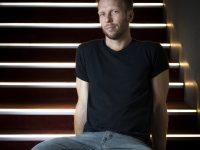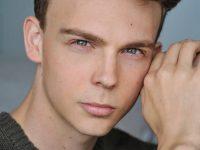
Soliloquy
Interview by Brendan Daynes
Australia’s dance scene remains as vibrant as ever, and Stephanie Lake, with her brilliant choreographic mind, stands out as a luminary who is leaving an everlasting mark on the scene. Her work transcends boundaries and defies expectations, showcasing a unique and influential presence in the world of dance.
In a captivating conversation with Brendan Daynes, Stephanie unravels the layers of her upcoming creation, Soliloquy, a groundbreaking experience that will be a feature event at the upcoming Sydney Festival, that defies categorisation. From the unconventional choice of Telemann’s Baroque compositions to the collaborative synergy with musician Genevieve Lacey and director-choreographer Gideon Obarzanek, Soliloquy is a radical reinvention of the solo recital. Stephanie shares the meticulous process of working with 32 untrained dance participants, transforming them into a living, breathing part of the music.
Your body of work is incredibly diverse, from choreographing for major dance companies to collaborating across various art forms. Can you share what inspires you as a choreographer?
I’m just super inspired by people. My greatest inspiration as a choreographer is definitely the dancers that I work with. If I’m working on one of my big shows, like Manifesto, it’s the people in the room—the dancers, the musicians—and the work is all born out of my total obsession with them and what they can do. Together, we build this world.

There’s also been this other branch to my dance life that’s been incredibly rewarding. I also have this passion and love for offering up experiences to people who don’t normally consider themselves dancers, giving them a chance to be part of some kind of choreography. Over the years, I’ve done lots of big public participation events where the invitation is for anyone, regardless of their background, relationship with dance, or their body, to be involved and to learn some movement and dance alongside other people.
So, Soliloquy is kind of a blending of those two interests. It’s a professional show in a major festival, on a main stage, with incredibly skilled performers who are masters of what they do. But then there’s also this invitation for the public to not only watch it but be on stage, be inside of it, and connect with their bodies. It feels so good to move, it feels so good to dance, and I truly believe anyone can do it.
Soliloquy is a collaboration with musician Genevieve Lacey and director-choreographer Gideon Obarzanek. How do you approach collaboration?
Collaboration is everything to me. There’s no show without collaboration. So, I feel like my main job is actually to get the right people in the room. The building of the team is so essential. I take it super seriously and I think about the balance of the group. I think about the personalities in the room and think about the diversity. Then once we get in that studio together and start working, I feel like I’m just trying to create frameworks for people to discover something.
And we’re discovering things together. There’s so much play. and experimentation and failure and success and laughter and sweat and we go through it together and we find the show together because I’m searching for it as I’m making it. That trust with the performers and with the collaborators is completely the foundation of everything.
Could you delve into the inspiration behind Soliloquy and walk us through how the concept of blending music, dance, and a chorus of bodies came about?
Soliloquy is a beautiful show created by Genevieve Lacey, who’s one of, if not the best recorder player in the world. She’s a virtuoso musician and soloist who does all sorts of interesting work. She has collaborated with Gideon Abaznik, who was the founder and choreographer of Chunky Move, and now is the festival director of Rising, and they together conceived this piece where Genevieve would be playing the works of Telemann in this beautiful, sweet, and hour-long concert.
They wanted to have a very graphic element of the show, that features me leading a group of volunteers who basically are on tiers of seating, like bleachers, and all they do is they copy my movements. We end up with this gorgeous mosaic of unison, almost like waveforms or fractals that are just happening around Genevieve. It’s really simple, beautiful movement, but because it’s expanded out onto all of these bodies, and they’re volunteers it’s this really beautiful, kind of physicalisation of the music. It’s really, it’s about the music and the beautiful movement that’s getting passed through all of these bodies. There’s quite a bit of sophistication in the movement,
we can get quite speedy and intricate sometimes because they don’t have to concentrate on anything, all they have to do is just mirror what I’m doing. So you end up with these really beautiful, almost like kaleidoscopic images.
I also have a little chance to do a little bit of dancing myself, which is quite unusual these days because I’m long retired, but it’s a nice opportunity for me to be on the stage again as well.
Soliloquy involves 32 untrained dance participants, creating a living part of the music. Could you share insights into how you guide and work with these untrained dancers, and what collective experience you hope the audience gains through their presence in the performance?
It’s a really unique project, and that is the magic. They don’t have to rehearse; they don’t have to prepare anything. We tell them to just turn up on the day. They come. I meet them. We talk them through, and we do a bit of a warm-up together. We practice some copying and mirroring so that they get the principles of how it works. We go through a couple of sections and then, bingo bongo, they’re ready for an audience. It’s kind of like just add water, and instant performance.
It’s really beautiful for someone who’s a professional performer to be alongside people who don’t get a chance to do that, to be on stage and experience that feeling of being under lights and in front of an audience and be inside the music like that. It’s really rare and special. And so you get to kind of experience it for the first time through their eyes as well.
It is so different and so special, for all of us who’ve got hooked from a young age, you get used to it, and of course, there’s always that buzz. Soliloquy is really lovely because you get to be alongside people who are having that experience for the first time.
The amazing communal effect of being on stage with other people experiencing being next to this incredible musician, right next to you can see her breathing and all of her finger work, it’s just extraordinary, it’s such a privilege to be that close to someone who’s that impressive. It’s really beautiful, the bonding that happens between the volunteers is so gorgeous. They get that adrenaline of that feeling of being on stage and doing something in front of an audience.

I want the audience to be blown away by Genevieve’s virtuosity. She is just phenomenal. So the music itself is this whole experience. But this is such a beautiful piece because it’s so much more than just a concert. There’s the music, but then there’s also this beautiful kind of array of humanity on stage and this beautiful choreography that puts the music inside the bodies of all of these people. So it’s a really unique experience, I think anyone would love this show. You don’t have to be a music expert to enjoy the show at all, and you definitely don’t have to be a dance expert. But for anyone who enjoys beautiful, great music and great dancing, you will love this show.
Your career has been marked by numerous awards and accolades, showcasing your ability to make contemporary dance accessible to diverse audiences. How do you approach choreography to ensure that it can be enjoyed by both seasoned dance enthusiasts and those who may be new to the art form?
I guess I just really like being part of shows where you don’t have to overanalyse anything. I believe you can access it purely for physical enjoyment or experience an empathetic response to what you’re seeing. If there are other layers there, and you’re interpreting things through different lenses, that’s awesome. It’s been my mission to make contemporary dance accessible for all. It kind of has this reputation for being a bit tricky, a bit alienating, like you have to have inside knowledge to appreciate it. I really want to bust that preconception and invite anyone and everyone to our shows. I would love for anyone and everyone to enjoy contemporary dance. I genuinely believe they can because we all have a body that moves, twists, grabs, and reaches, and dance is one of the earliest forms of expression. Unfortunately, people are generally distant from their moving bodies, but there’s so much pleasure in that. To watch a show like this is to see ordinary people moving in extraordinary ways. I hope it inspires people to do things, maybe attend more dance events, join a class, or be part of something next time because they can see on stage that they could actually be doing that.
As someone deeply involved in the dance industry, what changes or developments do you see shaping the future of dance?
More dance and opportunities for all. I would love to share an interesting fact. Apparently, dance is the most participated activity for children in Australia. It’s an extraordinary statistic, but unfortunately, this enthusiasm doesn’t always carry into adulthood. It tends to drop off. However, it underscores the incredible interest in dance. People, especially kids, love to dance. So, I hope that in the future, dance becomes more accessible. I hope people consider dance as their first choice when attending live shows, whether in a theatre or elsewhere. Moreover, I wish for more opportunities for people to get involved in dance as well.
With your extensive experience as a choreographer, what advice do you have for emerging choreographers and dancers looking to make their mark in the dance world?
Not all dancers want to be choreographers. It’s a different skill. I can talk about my experience starting out. I was choreographing on my friends; I was choreographing on my sisters. When I was a student, I was just putting shows on all the time. I made no money from choreography for many, many years, but it was my favourite thing to do.
I think when you’re starting out, you just got to practice, practice, practice, like anything, like any skill, you have to be doing it all the time. So every time you make a piece, even if it’s a five-minute little piece for a fringe festival, you’ll learn something from that because you’ve got to get stuff in front of an audience and feel the feedback and see what’s working and learn something for next time.
I would just say you’ve got to keep practicing, keep putting your stuff out there, don’t wait for opportunities, make opportunities yourself!
Soliloquy seems like a deeply personal and unique project. How has working on this show impacted you personally, and what do you hope the audience takes away from the performance?
Well, for me personally, I didn’t expect to ever perform again. I thought that chapter of my career was finished. So, it’s been really lovely to be invited to be a dancer again on stage and reconnect with that side of myself because I absolutely loved being a performer. It is really nice; it does feel great to be on stage again and to connect with my performing self, especially to be alongside someone as amazing as Genevieve. It’s nice for me to have another chance to perform and I think it is good to see older people on stage and it’s great for the audience to see that it’s not just a young person’s game.
Soliloquy promises to be an extraordinary journey into the realms of dance and music, pushing the boundaries of traditional performance. For an unforgettable evening of groundbreaking artistry, secure your tickets and delve into the extraordinary world of Stephanie Lake. For more details, visit https://www.sydneyfestival.org.au/events/soliloquy#fulldetails.









